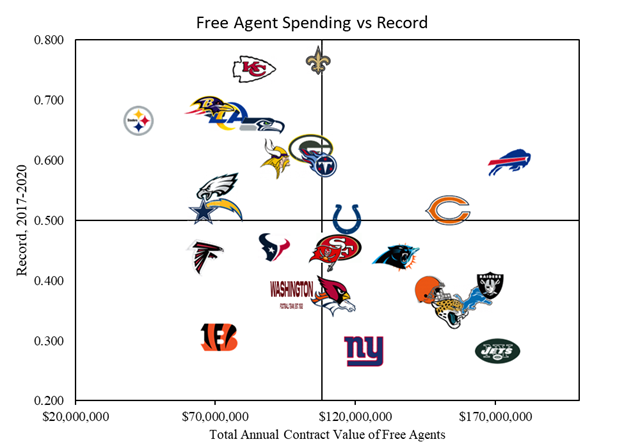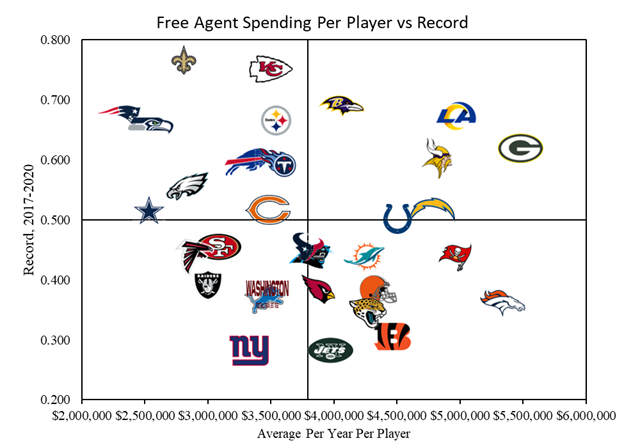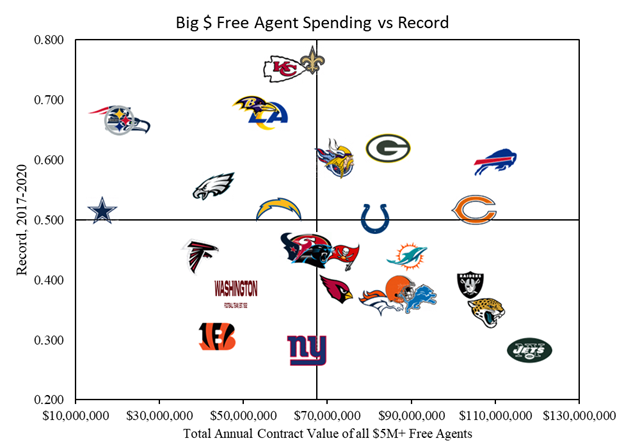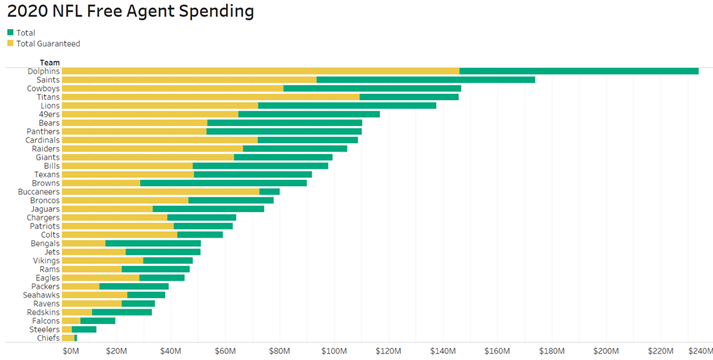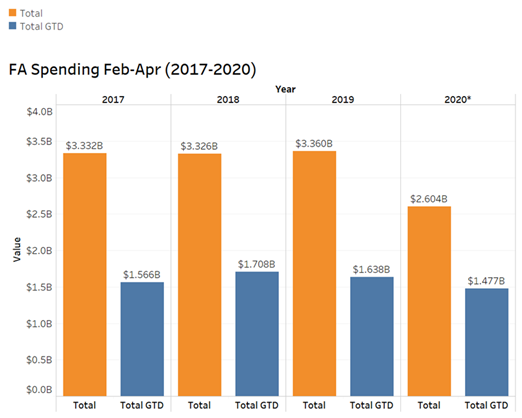Continuing our look at free agent signings I thought I would take a look at signings by age for players who switched teams this year. The average age of a free agent signing was 28.65 years old (for age we are using the age of the player at the end of the 2021 regular season) with a median of 28. Here is the breakdown by age group for signings along with the average salary for each group of players.
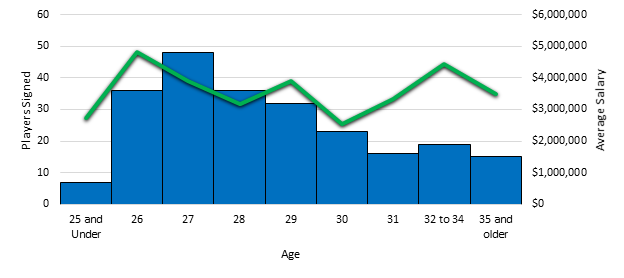
Youth is clearly preferred in the NFL and ideally landing as a young free agent is good for your career. What is interesting was the salaries for the older players but that should be expected since many of the older players are well established in the NFL at that age and for many the name value helps get a reasonable salary as well as the fact that a player at that age has to be pretty productive for the league to keep him employed.
The team that targeted the oldest players in the NFL this year was the Cardinals. Arizona added five players to the roster and not one player was under 30. The average age of their group will be 32.6 years old. It’s a bit of a bizarre way to build a team around a young QB. Arizona now has the 4th oldest roster in the NFL at just a touch under 27. They have become one of the oldest teams in the league on offense and top 10 oldest on defense when it comes to expected participation. Arizona has done one of the poorer jobs over the last three years of getting younger and finding any long term contributors
The Chargers were the second oldest when it came to free agency with an average age of 30.86 across seven additions. The only players under 30 were Matt Feiler (29) and Ryan Smith (28). That said most of the additions will just be 30 this year with Jared Cook (34) and Chase Daniel, who likely won’t play a snap, being the older players. Unlike Arizona the Chargers are not an older team overall so this is more about depth, leadership, and signings at positions who typically last longer in the league. I can at least see more of a logic in their signings.
The final team with at least five signings which averaged at least 30 years of age was the Chiefs. Their age was inflated a little by the signing of Kyle Long but no other player signed will be under 29 at seasons end. Only one of those players is on a long term contract and the Chiefs are a young enough team to where this should not be a concern.
The other teams who added older players to the roster were the Rams (1 signing), Eagles (4), and Ravens (2).
Carolina was the top team with a youth focus, that signed a significant amount of free agents, signing 9 free agents at an average age of 27.4. They signed one player over 30 but clearly were looking at finding players who might be able to contribute for a two year period as they rebuild the team. Carolina now has the 2nd youngest roster in the NFL and in particular have a very young defense. They are in the second year of tearing down what was an old and salary cap ravaged roster. I think this is the year we will look at as the bridge toward what should be a more complete rebuild in 2022. This team makes all the sense in the world to draft a QB.
The Raiders also focused on youth this time around with an average age of 27.6 in 2021. The only player over 30 is John Brown. Nobody is a long term signing but given the teams salary cap constraints and holes on the roster they probably were better off taking a quantity approach. The Raiders are still one of the older teams but most of the players are expected to be in their prime years or just slightly out of them unlike some of the other teams that are heavily reliant on older players continuing to defy father time.
Miami signed 11 players and not one over 30. If you have paid attention to the Dolphins rebuild this is clearly by design. They have the 9th youngest roster in the league and the 4th lowest participation rate on offense for players over 30 and not one player over 30 on defense that played a snap last year so while they didn’t spend like they did last year they showed no interest in finding older guys to fill voids and instead looked more for low cost with upside.
The following table has the list of the average age of free agent additions as well as the current average age of the team’s roster.
| Team | FA Signings | FA Avg. Age | Roster Avg. Age |
| Colts | 4 | 27.00 | 25.77 |
| Saints | 3 | 27.33 | 26.85 |
| Broncos | 3 | 27.33 | 26.12 |
| Panthers | 9 | 27.44 | 25.82 |
| Raiders | 9 | 27.56 | 26.44 |
| Seahawks | 3 | 27.67 | 26.30 |
| Patriots | 13 | 27.69 | 27.20 |
| Browns | 5 | 27.80 | 26.08 |
| Dolphins | 11 | 27.82 | 26.11 |
| Vikings | 6 | 27.83 | 26.03 |
| Jaguars | 11 | 27.91 | 25.83 |
| Bengals | 7 | 28.00 | 26.22 |
| Jets | 11 | 28.00 | 25.99 |
| Lions | 10 | 28.10 | 26.24 |
| Bills | 6 | 28.17 | 26.86 |
| Steelers | 4 | 28.25 | 26.25 |
| Texans | 27 | 28.30 | 27.07 |
| Giants | 14 | 29.07 | 26.54 |
| Titans | 9 | 29.33 | 26.59 |
| Falcons | 6 | 29.50 | 26.62 |
| Redskin | 8 | 29.50 | 26.33 |
| Cowboys | 8 | 29.50 | 26.21 |
| Bears | 7 | 29.57 | 26.94 |
| 49ers | 7 | 29.71 | 27.10 |
| Chiefs | 5 | 30.00 | 26.38 |
| Ravens | 2 | 30.00 | 26.29 |
| Eagles | 4 | 30.75 | 26.22 |
| Chargers | 7 | 30.86 | 26.23 |
| Cardinals | 5 | 32.60 | 26.96 |
| Rams | 1 | 35.00 | 25.97 |
| Buccaneers | 0 | – | 26.90 |
| Packers | 0 | – | 26.03 |
